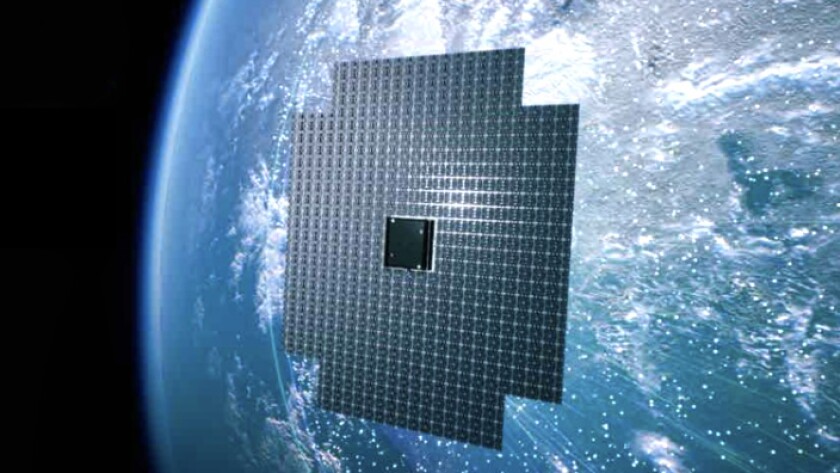AST SpaceMobile and Nokia said they have signed a five-year 5G deal to build a space-based cellular broadband network accessible directly by standard mobile phones.
Tommi Uitto, president of mobile networks at Nokia, said: “We have worked closely with AST SpaceMobile on this important initiative for two years which seeks to provide crucial connectivity from space to underserved communities around the world.”
Last week AST SpaceMobile, based in Texas, said its first satellite, BlueWalker 3 (pictured), was on the way to California for final environmental testing. It will then go to Cape Canaveral in Florida for launch into low Earth orbit (LEO) in September.
BlueWalker 3 will carry a 64 square metre phased array antenna that will test the idea of direct satellite-to-mobile communication. AST SpaceMobile has booked SpaceX to launch the satellite to around 400km above the Earth’s surface.
The aim for BlueWalker 3 is to try out 4G mobile coverage for remote areas, to and from standard, unmodified cellphones, which will swap automatically between the existing radio access network (RAN) and satellite service.
Nasdaq-listed AST SpaceMobile has said it is working with companies such as Globe Telecom, Rakuten and Vodafone to build a satellite-based network that would be compatible with ground-based cellular masts and networks.
But Nokia’s part in the project is for both 4G and 5G coverage in remote areas, from AST’s planned fleet of 110 satellites.
Under the newly announced deal, Nokia and AST SpaceMobile say they will work to achieve their joint ambition to expand universal coverage and connect underserved communities around the world.
It’s an ambition Nokia has had for a long time. In 2010 Sanjiv Ahuja, a former CEO of Orange UK, became CEO of hedge-fund-backed LightSquared, a company working with Nokia to develop satellite cellular coverage across remote areas of the US.
But that project failed, and LightSquared fired 45% of its 330 staff in early 2012, and today the company survives as Ligado Networks, chaired by none other than Ivan Seidenberg, famous – when he was CEO of Verizon – as asking “Why would anyone use a cellphone in their home?” Ahuja now chairs Tillman Global Holdings, a family company that invests in digital infrastructure.
AST SpaceMobile said its mission is to eliminate the connectivity gaps faced by over five billion mobile subscribers worldwide and to bring cellular broadband to approximately half of the world’s population who remain unconnected.
Scott Wisniewski, chief strategy officer at AST SpaceMobile, said “Nokia is supporting us with dozens of engineers and development professionals, including leading architecture research experts at Bell Labs, the world-renowned industrial research arm of Nokia.”
But their announcement is somewhat unclear. AST SpaceMobile makes much of its claim that it will be able to transmit to and receive from standard mobile phones, which will roam between conventional land-based cellular networks and its satellite network as required.
The announcement says: “Nokia will provide equipment from its comprehensive, energy-efficient AirScale portfolio including its AirScale base stations powered by its latest generation of Nokia’s ReefShark System-on-Chip (SoC) chipsets.”
It adds: “AST SpaceMobile will benefit from Nokia’s modular baseband plug-in cards which add capacity where it is needed offering flexibility and efficiency. Nokia will also provide its NetAct solution for network management and seamless daily network operations as well as optimization and technical support services.”
That would imply cards have to be plugged in somewhere – but, satellites being largely inaccessible day-to-day, the announcement is not clear about where.
Capacity has asked Nokia to clarify this.






